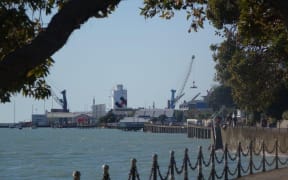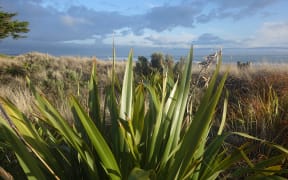It is one of New Zealand's smallest islands, but still large enough to host a range of pests and rodents.
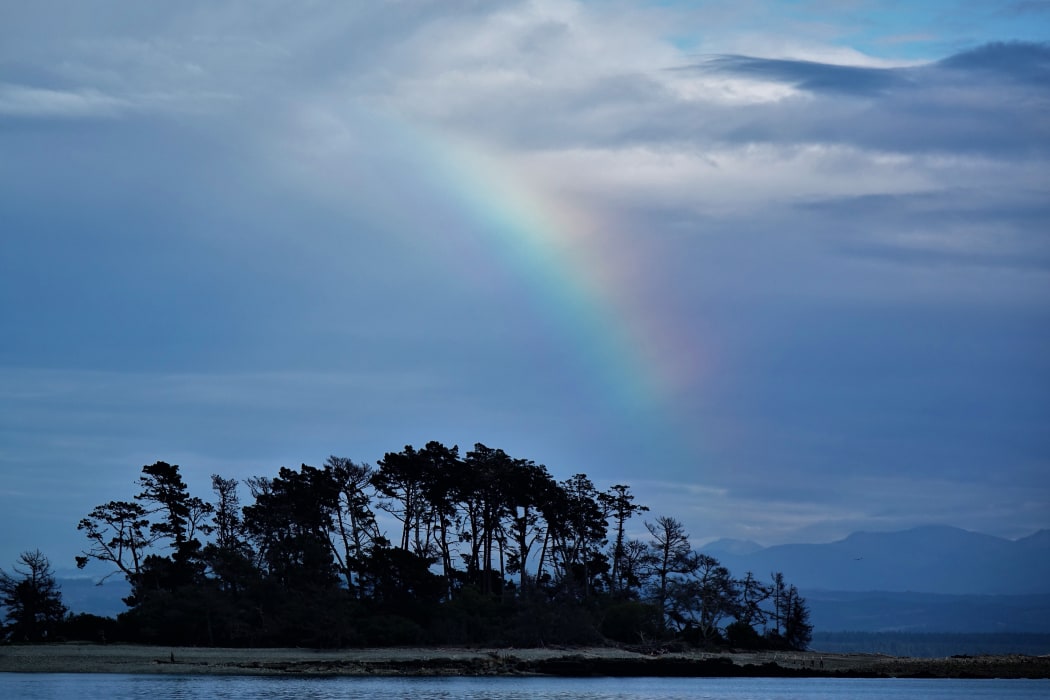
A rainbow over Haulashore Island which is a stone's throw from Nelson's seafront, despite its size the island is still large enough to host pests and rodents. Photo: RNZ / Tracy Neal
Haulashore Island, which has been a backdrop to Nelson's waterfront for 113 years, is the focus of a community restoration programme. Volunteer trappers are now flocking to the little island to help with the return of penguins, lizards and rare lichens.
The 5ha island is a stone's throw from the city's seafront. It is accessible by paddleboard, kayak, dinghy, luxury launch, or the small red ferry, Waka-to-and-fro, named in reference to its home port (Wakatu) and the path it plies between Nelson's historic lighthouse, the port of Nelson, and the island.
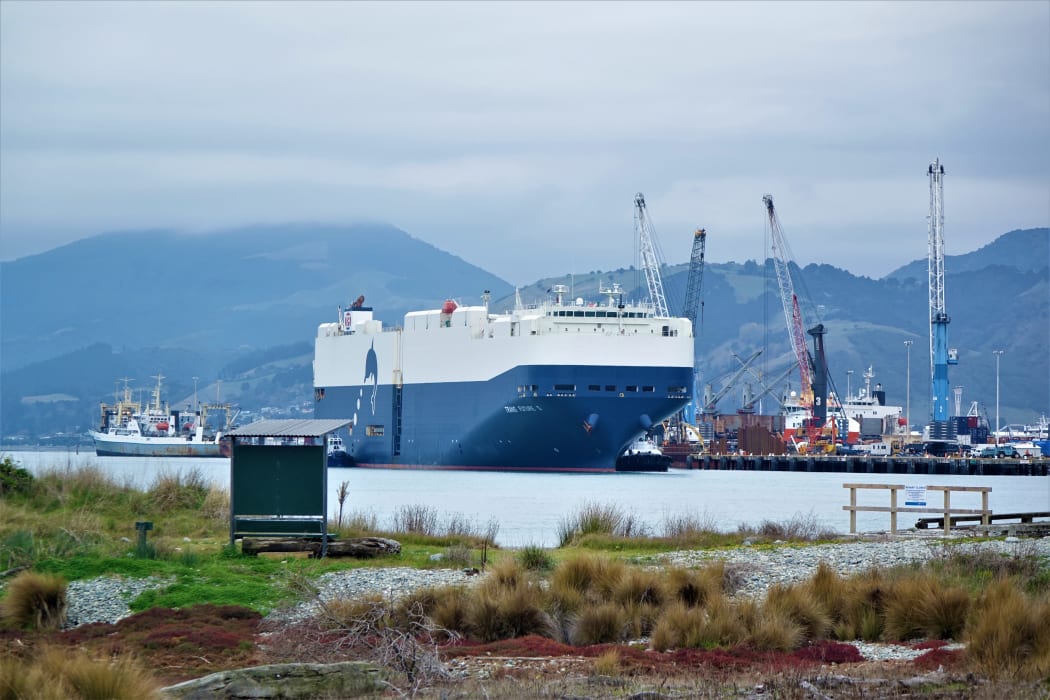
Haulashore Island is only a stone's throw from the city's waterfront. Photo: RNZ / Tracy Neal
Sadly, it's also a short swim for rats.
It is the mission of volunteer group Friends of Haulashore to rid the island of rodents, armed with peanut butter, dried rabbit bait and some mighty powerful traps.
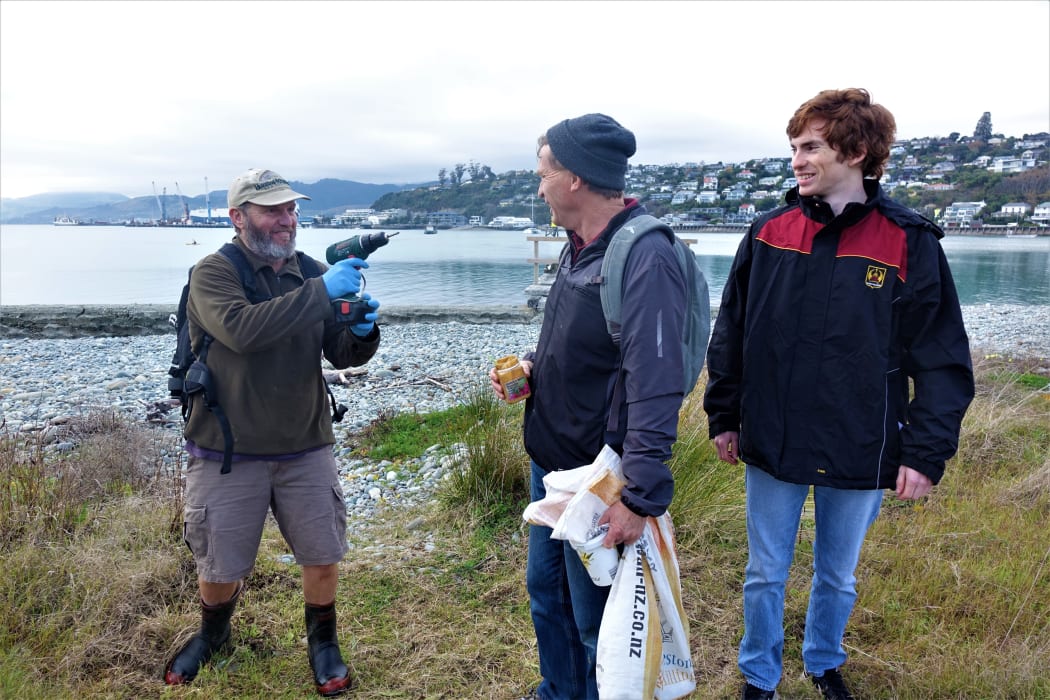
Jonathan Banks handles the drill while Andrew and Finn Fidler appear unfazed. Photo: RNZ / Tracy Neal
Scientist and volunteer trapper Jonathan Banks said the trap line of 25 boxes circled the island, and crossed through its middle.
The environmental monitoring scientist with Nelson's Cawthron Institute enjoyed the break from laboratory work, but said checking traps was sometimes messy, especially after level 4 lockdown.
"There were rats in the traps that had been there for ages, because of the Covid lockdown. They were starting to turn into goo."
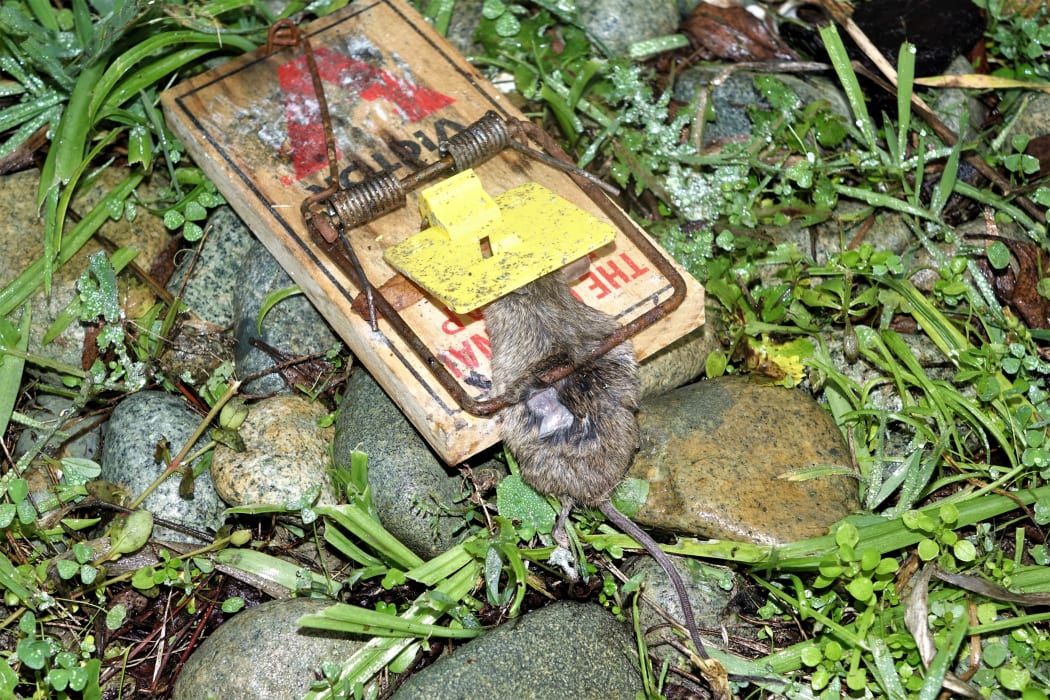
A grisly end. Photo: RNZ / Tracy Neal
Fellow scientist Andrew Fidler and his son Finn are also part of the volunteer group.
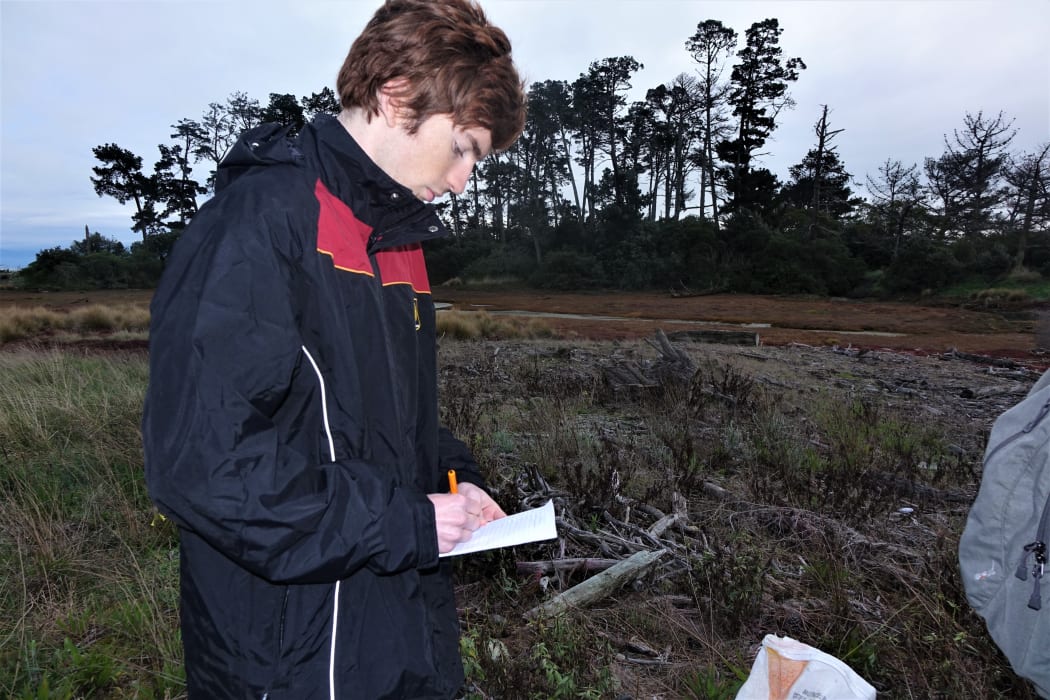
Finn Fidler recording details of trapping on Haulashore for the national database. Photo: RNZ / Tracy Neal
Finn is a senior student at Nelson's Garin College and is responsible for recording what is in each trap for the national trapping database.
"I'm recording at each trap what we do and what we've caught, and then I upload it on to the website once I'm home.
"You can get these various overlays, based on colour, how dense the kill rate is in various places."
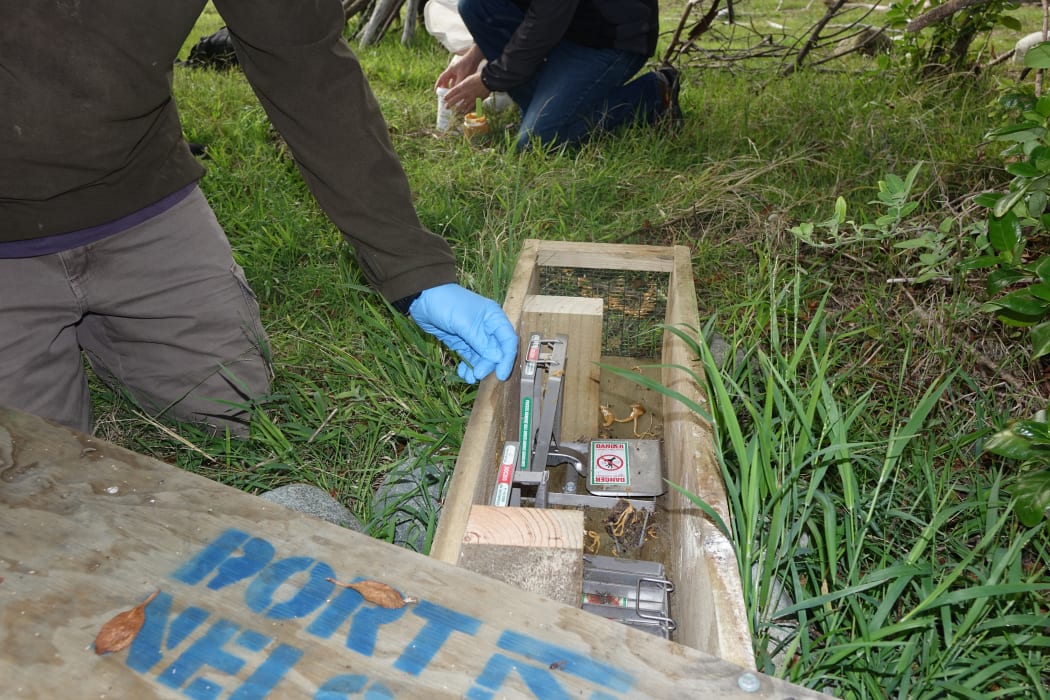
Baiting the traps with peanut butter. Photo: RNZ / Tracy Neal
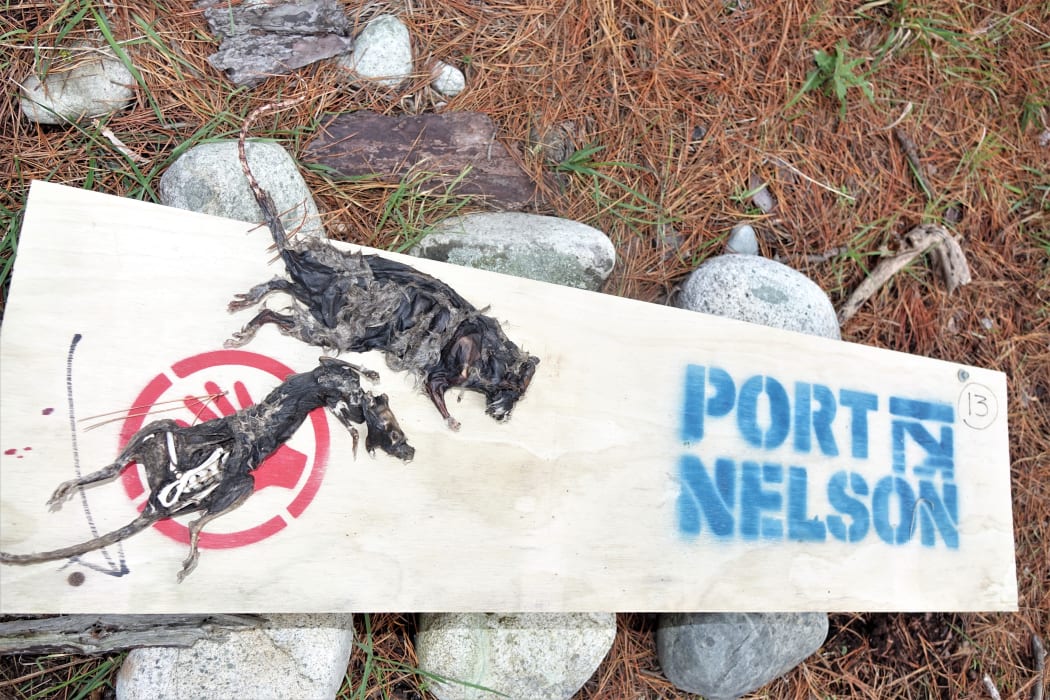
A warning to other rats on the island. Photo: RNZ / Tracy Neal
Friends of Haulashore was set up to protect the island's surprising array of birds - including penguins - and some rare lizards.
Andrew said it was a small but dedicated group supported by Port Nelson, Nelson City Council and the Menzshed charity.
"This project kind of grew organically. We started thinking it might be nice to put some (penguin) nesting boxes up, and then it kind of expanded."
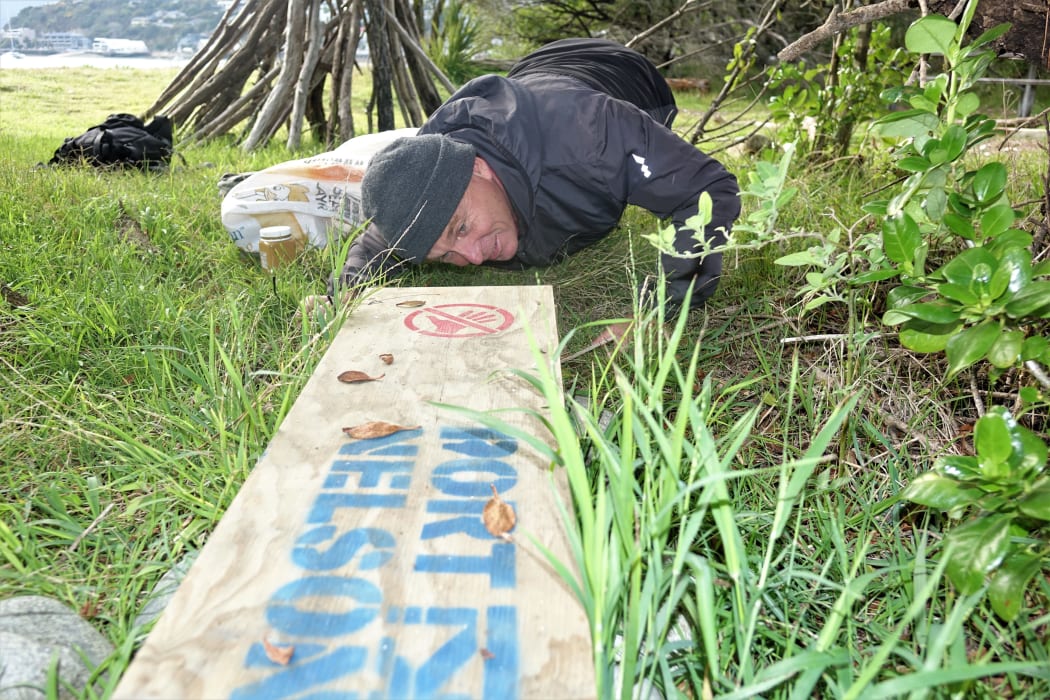
Volunteer trapper Andrew Fidler. Photo: RNZ / Tracy Martin
Haulashore Island is named for the vessels that were once careened on its stony shores.
It is not a natural island - but an offcut from the city's famed Boulder Bank.
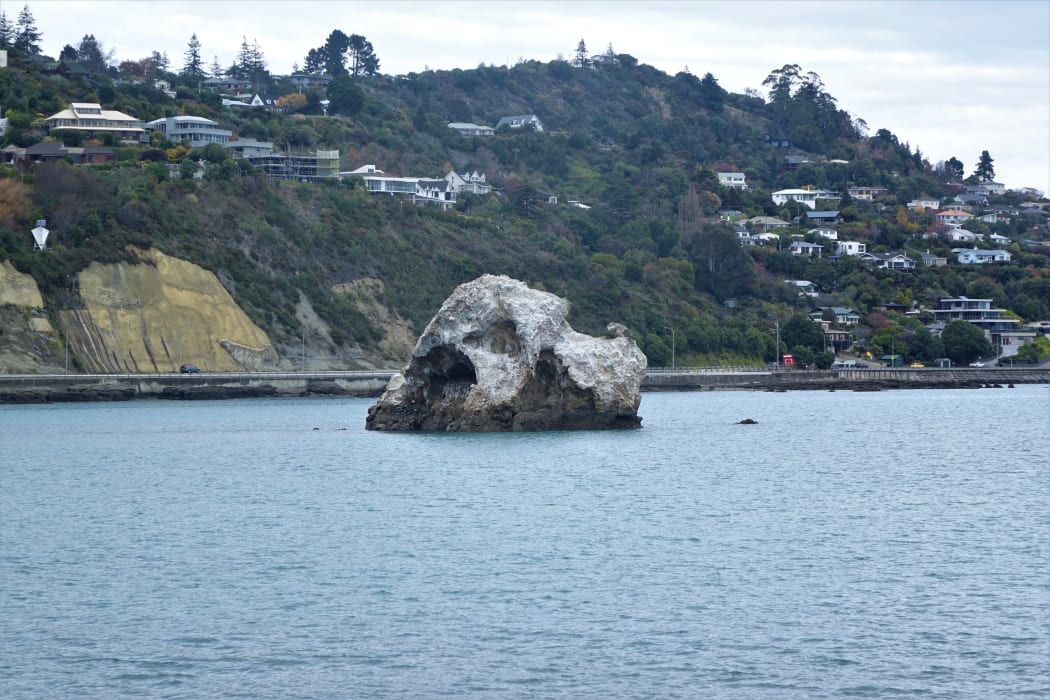
Fifeshire Rock which marks the old shipping entrance before The Cut was formed in 1906, creating Haulashore Island. Photo: RNZ / Tracy Neal
In 1906 a cut was made in the bank to allow easier passage to Nelson Harbour for shipping.
"In the transition from sailing ships to steam ships the (old) entrance to the harbour became more of an issue because it wasn't deep enough, but the The Cut was put through so ... now it's really an island."
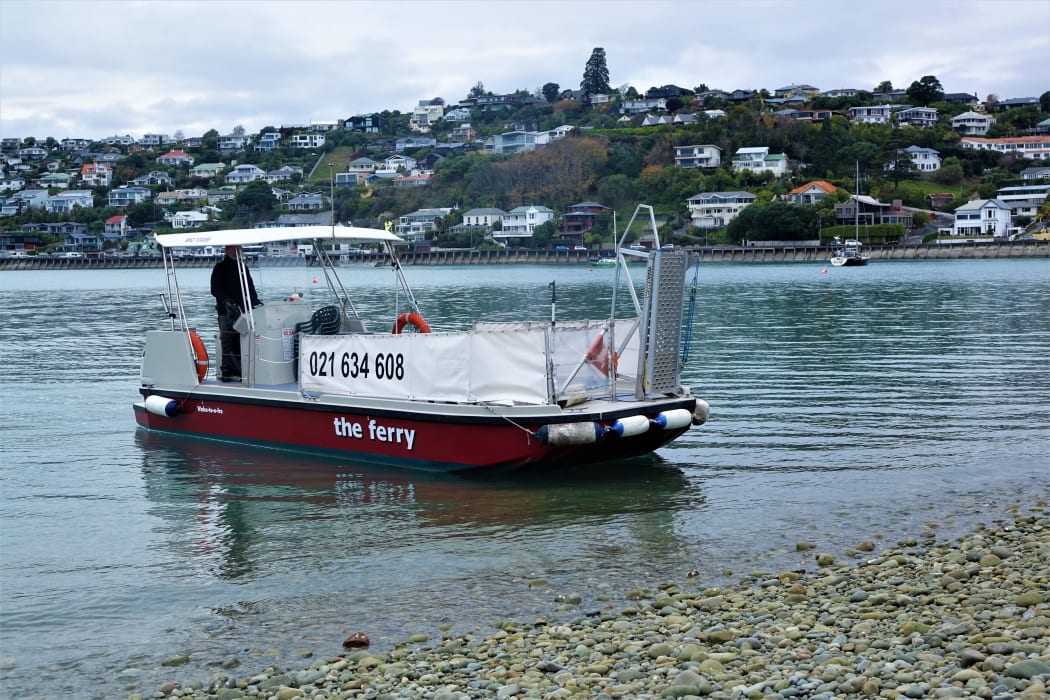
Haulashore Island ferry Waka-to-and-fro. Photo: RNZ / Tracy Neal
The city council-run reserve is enjoyed as much by the public for a spot of tea by the sea, as it is by the fur seals that slumber on its beaches.
Jonathan Banks said their aim was simple.
"If you ever get the chance to go on to an island with no predators - no rats or mice, they're just stunning places. You wouldn't believe how many insects there are, how many birds there are and the difference in the vegetation.
"The density of life on predator-free islands is amazing."

